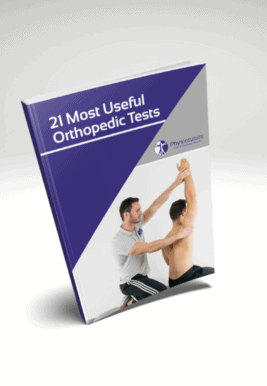Learn
Shoulder Relocation Test | Anterior Shoulder Instability Assessment
The shoulder joint has a tremendous degree of mobility, which renders it prone to instability. While muscle forces control stability in mid-ranges of motion, clinical instability presents itself at end range of motion. The instability becomes apparent when a patient has apprehension or, fear of subluxation, at the end range of motion.
The shoulder Relocation test is usually performed directly after a positive Shoulder Apprehension Test. has a sensitivity of 64.6% and specificity of 90.2% according to Hegedus et al. (2012) and has a moderate clinical value for including or confirming anterior instability.
Execution:
1. The patient has reported symptoms with the Apprehension Test
2. The patient’s shoulder is brought into 90° of abduction and maximal external rotation until the patient feels apprehension
3. The examiner gives an anterior-to-posterior (AP) directed pressure at the humeralheadPositive Outcome: Patient’s fear of luxation is reduced after the AP pressure is applied
Other common tests to assess anterior glenohumeral joint instability are:
21 OF THE MOST USEFUL ORTHOPAEDIC TESTS IN CLINICAL PRACTICE

References
Like what you’re learning?
BUY THE FULL PHYSIOTUTORS ASSESSMENT BOOK
- 600+ Pages e-Book
- Interactive Content (Direct Video Demonstration, PubMed articles)
- Statistical Values for all Special Tests from the latest research
- Available in 🇬🇧 🇩🇪 🇫🇷 🇪🇸 🇮🇹 🇵🇹 🇹🇷
- And much more!








